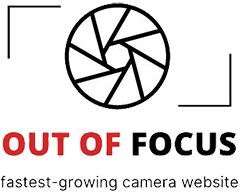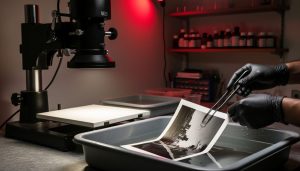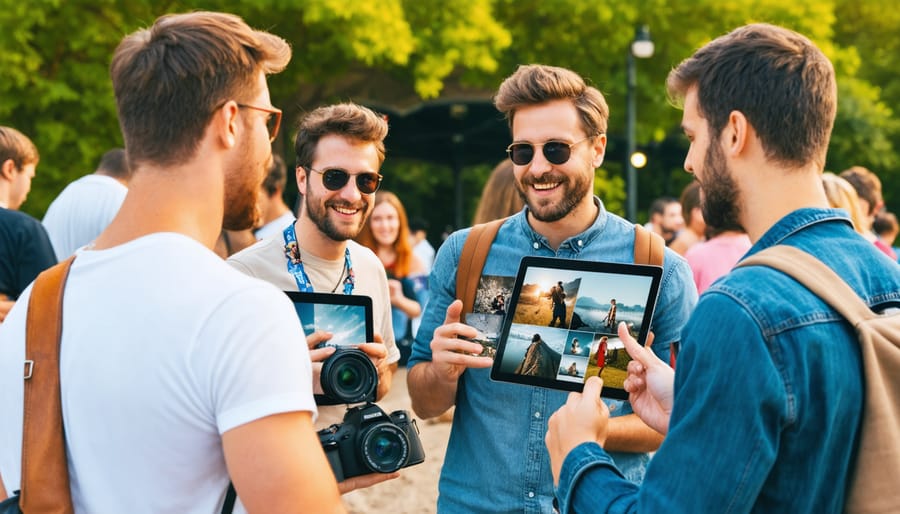
Step into any photography event with your portfolio ready on your phone – it’s the new business card that instantly showcases your work and sparks meaningful conversations. Master photographers know networking isn’t just about trading contact information; it’s about creating genuine connections that lead to collaborative opportunities and client referrals.
Professional networking in photography demands a strategic blend of online presence and real-world relationship building. Whether you’re documenting weddings or shooting commercial work, your success often hinges more on who you know than what gear you own. The most successful photographers spend as much time cultivating industry relationships as they do perfecting their craft.
Build your foundation today: join local photography groups, engage actively on Instagram with thoughtful comments (not just likes), and attend industry events where potential clients gather – not just where other photographers meet. The connections you forge now can transform your hobby into a thriving business, open doors to dream projects, and create a support network that elevates your entire career.
The key to effective networking isn’t collecting business cards – it’s becoming the photographer everyone wants to work with, refer to others, and learn from. Let’s explore how to make that happen.
Start Where You Are: Digital Networking Foundations
Creating a Professional Online Presence
In today’s digital age, establishing a strong online presence is crucial for networking success. Start by identifying the key social media platforms for photographers that align with your style and target audience. Instagram and LinkedIn are essential, but don’t overlook platforms like Behance or 500px for connecting with fellow photographers.
Create a consistent brand identity across all platforms by using the same professional profile photo, cohesive bio messaging, and maintaining a regular posting schedule. Share behind-the-scenes content, technical insights, and your creative process to build authenticity and engage with your audience meaningfully.
Your professional website serves as your digital portfolio and hub for all online activities. Focus on creating a portfolio website that converts visitors into connections or clients. Include an engaging about page, showcase your best work, and make it easy for potential collaborators to contact you.
Remember to optimize your online presence for search engines by using relevant keywords in your profiles and website content. Regularly engage with other photographers’ work through thoughtful comments and shares, focusing on building genuine relationships rather than simply collecting followers. This approach helps create meaningful connections that can lead to real-world opportunities and collaborations.
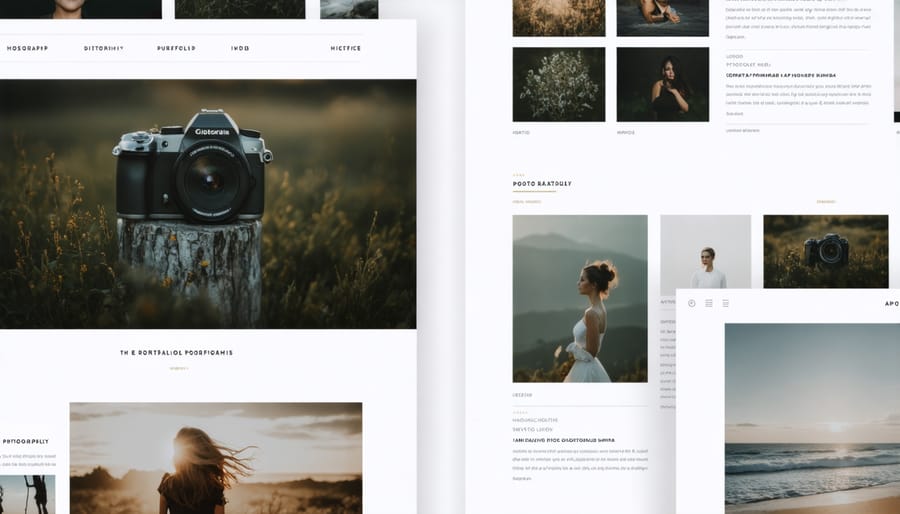
Engaging With the Photography Community
Engaging with the photography community online requires a thoughtful balance between sharing your work and supporting others. Start by identifying and joining active photography groups on platforms like Instagram, Facebook, and Reddit that align with your specific interests or genre. Whether you’re into landscape, portrait, or street photography, there’s a community waiting to connect.
When participating in these spaces, follow the 80/20 rule: spend 80% of your time engaging with others’ content and 20% sharing your own. Leave meaningful comments that go beyond simple compliments – discuss specific elements you admire, ask questions about techniques, or share how the image inspires you. This approach helps build genuine relationships rather than appearing self-promotional.
Participate in photography challenges and themed contests hosted by community groups. These events provide excellent opportunities to push your creative boundaries while connecting with fellow photographers. Share your process, including both successes and failures, as this vulnerability often resonates with others and sparks meaningful discussions.
Consider starting a photography blog or contributing to existing ones. Share your knowledge through tutorials, behind-the-scenes insights, or equipment reviews. Remember to maintain consistency in your online presence – regular, thoughtful engagement is more valuable than sporadic, high-volume posting.
Finally, don’t limit yourself to just one platform. Different communities offer unique perspectives and networking opportunities, helping you build a diverse and supportive network in the photography world.
In-Person Networking That Gets Results
Photography Events and Meet-ups
Photography events and meet-ups are goldmines for expanding your professional network and learning from fellow creatives. Start by searching for local photography groups on platforms like Meetup.com, Facebook Groups, or through your city’s photography clubs. These gatherings often range from casual photo walks to structured workshops, providing varied opportunities to connect with others who share your passion.
When attending events, bring business cards and a positive attitude, but avoid approaching every interaction as a sales opportunity. Instead, focus on genuine conversations about shared interests in photography. Listen to others’ experiences and be ready to share your own journey and challenges. This authenticity helps build lasting connections rather than superficial networking contacts.
Consider participating in photography festivals, conferences, and trade shows in your area. These larger events often feature industry speakers, equipment demonstrations, and organized networking sessions. While they may require an investment, the potential for meaningful connections and learning opportunities usually justifies the cost.
To maximize your event experience, arrive early to events and stay late – some of the best networking happens during these quieter moments. Don’t limit yourself to talking only with other photographers; connect with vendors, workshop leaders, and event organizers who can become valuable parts of your professional network.
If you can’t find suitable events in your area, consider organizing your own. Start small with a local photo walk or casual meet-up at a coffee shop. As your community grows, you can expand to more structured events, positioning yourself as a leader in your local photography scene while building valuable relationships along the way.
Industry Trade Shows and Conferences
Trade shows and industry conferences are goldmines for networking opportunities, offering face-to-face interactions that can’t be replicated online. Events like PhotoPlus Expo, WPPI, and local photography conventions bring together professionals, vendors, and enthusiasts under one roof, creating the perfect environment for meaningful connections.
Before attending any event, research the schedule and highlight sessions or workshops that align with your interests. Many conferences offer specialized tracks for different photography niches, from wedding photography to commercial work. Plan to arrive early for these sessions – the informal conversations before and after presentations often lead to valuable connections.
Make yourself approachable by wearing your conference badge visibly and carrying business cards. Consider creating event-specific promotional materials that showcase your best work. While it’s important to promote yourself, focus first on listening and learning from others. Ask thoughtful questions about their work and experiences rather than immediately launching into your elevator pitch.
Take advantage of social events and after-hours gatherings. These relaxed settings often facilitate more genuine conversations than formal conference hours. Don’t hesitate to join group discussions – photographers are generally welcoming and eager to share experiences with fellow professionals.
Follow up is crucial. Within 48 hours of meeting someone, send a personalized email or connect on social media, referencing specific points from your conversation. Consider suggesting a coffee meet-up if you’re both local, or schedule a virtual chat to continue the discussion.
Remember, successful networking at these events isn’t about collecting the most business cards – it’s about forming authentic connections that can lead to collaborations, mentorships, or referrals down the line.
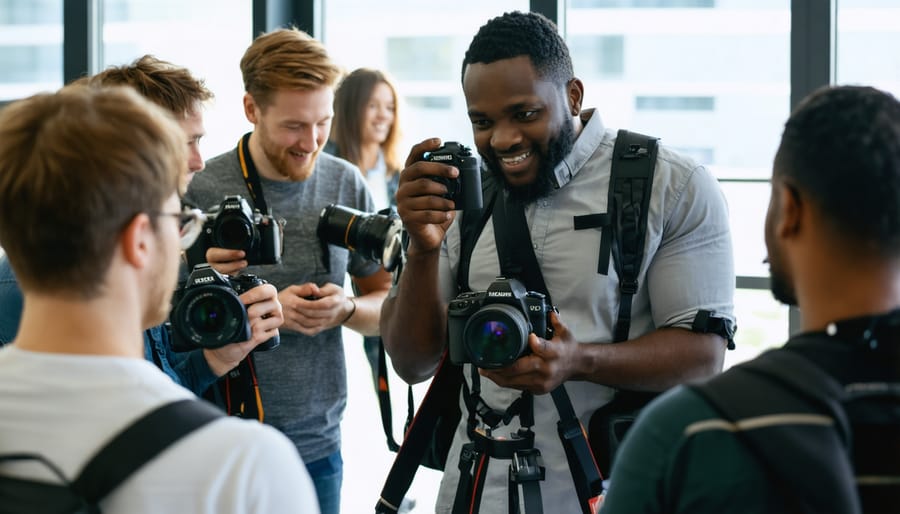
Building Collaborative Relationships
Finding and Approaching Potential Partners
Finding potential partners for collaboration starts with identifying photographers and businesses whose work complements yours without directly competing. Look for wedding photographers if you specialize in portraits, or product photographers if you focus on events. This complementary approach creates opportunities for mutual referrals and joint projects.
Social media platforms, particularly Instagram and LinkedIn, are excellent tools for discovering potential partners. Search relevant hashtags in your area and engage meaningfully with their content before making direct contact. Local photography groups and professional associations can also be valuable resources for finding a photography mentor or collaboration partners.
When approaching potential partners, focus on building genuine relationships first. Start by following their work, commenting thoughtfully on their posts, and sharing their content when relevant. Once you’ve established a connection, reach out with a personalized message that highlights specific aspects of their work you admire and suggests concrete ways you could collaborate.
Consider approaching local businesses that align with your photography style. For instance, if you shoot fashion, connect with boutique owners, makeup artists, and modeling agencies. Wedding photographers might partner with venues, florists, and wedding planners. Remember to prepare a professional portfolio and clear collaboration proposal before making contact, and always approach partnerships with a win-win mindset.
Creating Win-Win Partnerships
Creating successful partnerships in photography is all about finding the sweet spot where both parties benefit meaningfully from the collaboration. Start by identifying potential partners whose work complements yours rather than directly competes. For instance, a wedding photographer might partner with local venues, florists, or wedding planners to create a mutually beneficial referral network.
When approaching potential partners, focus on what you can offer before asking for anything in return. This might include sharing their content on your social media, providing professional headshots, or offering to photograph their products. These marketing strategies for photographers help build genuine relationships that last.
Structure your partnerships formally, even with friends. Create clear agreements outlining expectations, deliverables, and timelines. For example, if you’re collaborating with a makeup artist for a styled shoot, specify how the images will be used, credited, and shared by both parties.
Maintain these relationships by staying consistently reliable and professional. Follow through on commitments, meet deadlines, and always deliver quality work. Regular check-ins, even just a quick coffee meeting or social media interaction, help keep the connection strong. Remember to celebrate your partners’ successes and support their growth – successful networking is about building a community, not just a contact list.
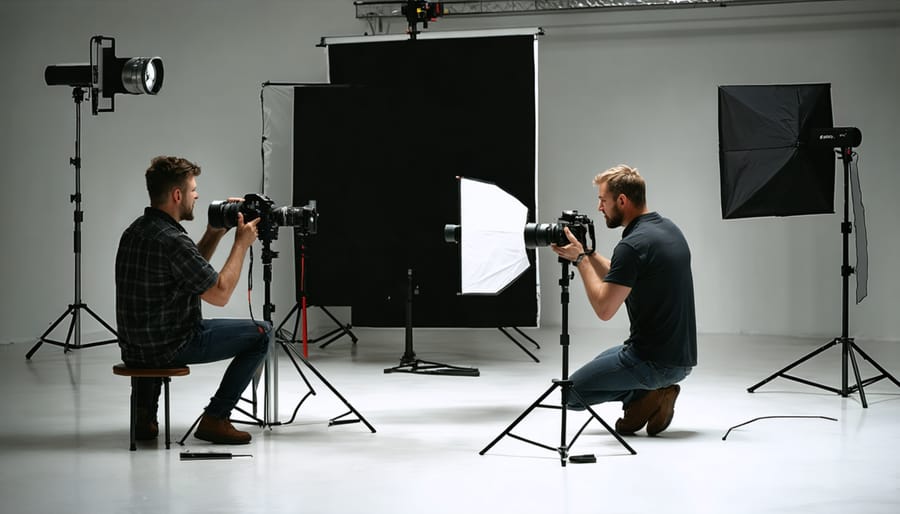
Common Networking Mistakes to Avoid
Even with the best intentions, photographers can sometimes stumble into networking pitfalls that can damage their professional relationships and reputation. Being aware of these common mistakes will help you build more meaningful connections in the industry.
One of the biggest mistakes is approaching networking with a “what’s in it for me” mindset. Constantly asking for favors or opportunities without offering value in return quickly burns bridges. Instead, focus on building genuine relationships and finding ways to help others first.
Over-promoting yourself can also backfire. While it’s important to share your work, bombarding every conversation with links to your portfolio or constantly steering discussions toward your achievements can be off-putting. Remember, effective networking is about dialogue, not monologue.
Another common error is neglecting to follow up after initial meetings or conversations. Many photographers make great connections at events but fail to maintain them. Set reminders to check in periodically with your contacts, even if it’s just to share an interesting article or congratulate them on recent work.
Being inconsistent with your online presence can harm your networking efforts. Posting sporadically, having conflicting information across platforms, or maintaining an unprofessional social media presence can make others hesitant to connect with you professionally.
Don’t make the mistake of limiting your network to only photographers. While peer connections are valuable, expanding your network to include makeup artists, models, venue owners, and other industry professionals can lead to more diverse opportunities and collaborations.
Lastly, avoid the trap of comparing yourself to others or viewing fellow photographers solely as competition. The photography community thrives on mutual support and collaboration. Focus on building relationships that can lead to referrals, shared learning experiences, and creative partnerships rather than viewing every interaction through a competitive lens.
Building a strong network as a photographer isn’t just about collecting business cards or growing your social media following—it’s about creating meaningful connections that can transform your career. Throughout this guide, we’ve explored various strategies, from leveraging social media platforms to attending industry events, and the key takeaway is clear: authentic relationships are at the heart of successful networking.
Remember, effective networking is a continuous journey, not a destination. Start by implementing one or two strategies that feel most comfortable to you, whether that’s joining a local photography group or engaging more actively on Instagram. As you gain confidence, gradually expand your networking activities and challenge yourself to step outside your comfort zone.
Take action today by updating your online portfolios, reaching out to a fellow photographer for coffee, or signing up for an upcoming photography event. The connections you make could lead to mentorship opportunities, collaborative projects, or client referrals that elevate your photography career to new heights.
Most importantly, approach networking with a giving mindset. Share your knowledge, support other photographers, and contribute positively to the community. The relationships you build should be mutually beneficial and sustainable over the long term.
Don’t wait for the perfect moment to start networking—the best time is now. Your next great opportunity could be just one conversation away.
